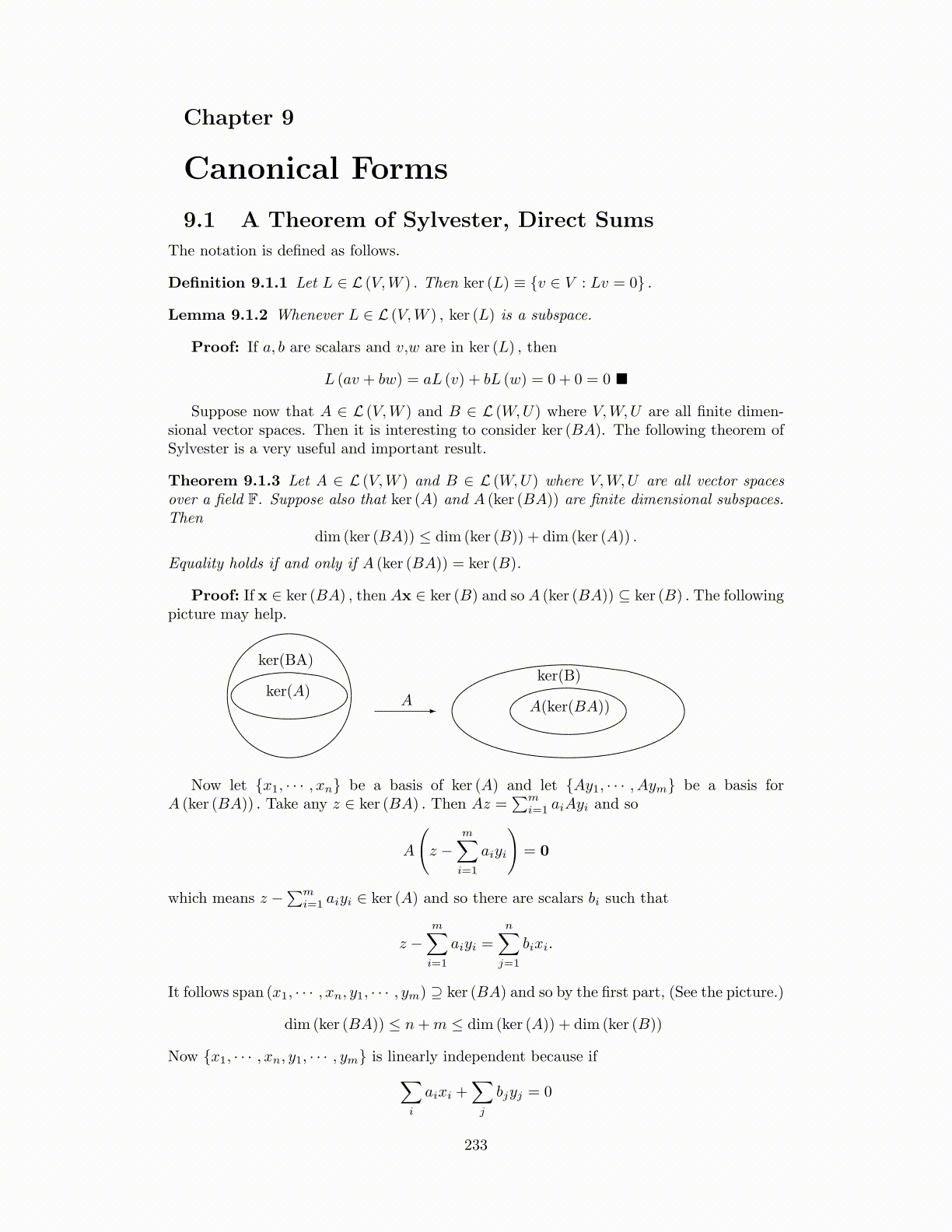
Chapter 9
Canonical Forms
9.1 A Theorem of Sylvester, Direct Sums
The notation is defined as follows.
Definition 9.1.1 Let L ∈ L (V,W ) . Then ker (L) ≡ {v ∈ V : Lv = 0} .
Lemma 9.1.2 Whenever L ∈ L (V,W ) , ker (L) is a subspace.
Proof: If a, b are scalars and v,w are in ker (L) , then
L (av + bw) = aL (v) + bL (w) = 0 + 0 = 0 ■
Suppose now that A ∈ L (V,W ) and B ∈ L (W,U) where V,W,U are all finite dimen-sional vector spaces. Then it is interesting to consider ker (BA). The following theorem ofSylvester is a very useful and important result.
Theorem 9.1.3 Let A ∈ L (V,W ) and B ∈ L (W,U) where V,W,U are all vector spacesover a field F. Suppose also that ker (A) and A (ker (BA)) are finite dimensional subspaces.Then
dim (ker (BA)) ≤ dim (ker (B)) + dim (ker (A)) .
Equality holds if and only if A (ker (BA)) = ker (B).
Proof: If x ∈ ker (BA) , then Ax ∈ ker (B) and so A (ker (BA)) ⊆ ker (B) . The followingpicture may help.
ker(B)
A(ker(BA))
ker(BA)
ker(A)A
Now let {x1, · · · , xn} be a basis of ker (A) and let {Ay1, · · · , Aym} be a basis forA (ker (BA)) . Take any z ∈ ker (BA) . Then Az =
∑mi=1 aiAyi and so
A
(z −
m∑i=1
aiyi
)= 0
which means z −∑m
i=1 aiyi ∈ ker (A) and so there are scalars bi such that
z −m∑i=1
aiyi =
n∑j=1
bixi.
It follows span (x1, · · · , xn, y1, · · · , ym) ⊇ ker (BA) and so by the first part, (See the picture.)
dim (ker (BA)) ≤ n+m ≤ dim (ker (A)) + dim (ker (B))
Now {x1, · · · , xn, y1, · · · , ym} is linearly independent because if∑i
aixi +∑j
bjyj = 0
233